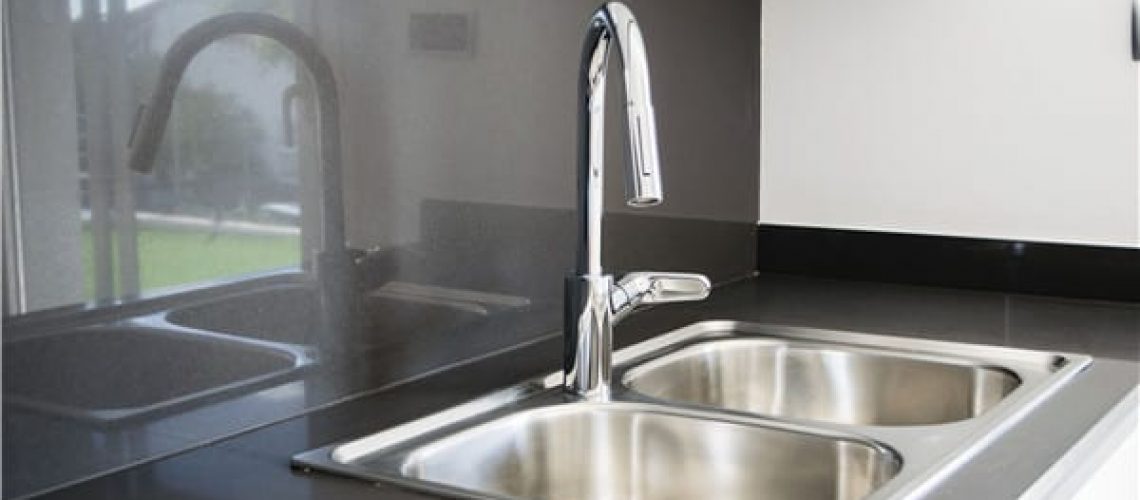The steel used in stainless steel sinks is an essential determinant of the quality of the sink.
The look, feel, and sturdiness of the sink also depend on the steel used to make it.
There are specific quality metrics and standard criteria, followed by stainless steel producers.
In the market, your steel quality can make or break a business deal with a potential client. It can also be the reason why your sales increase or decrease.
In this article, we’ll be discussing stainless steel sinks. We’ll also talk about the criteria established to evaluate their quality and usability.
We’ll also discuss these criteria from the standpoint of the market leader in this regard, Symbol.
Let’s get right into it.
What are Stainless Steel Sinks?
As the name suggests, a stainless steel sink is a large container made out of stainless steel. It has taps to supply water, hot or cold, depending on the setting.
The quality of the stainless steel used to build a sink is critical to the sink’s overall worth.

How To Check Stainless Steel Sinks?
If you’re a distributor or a wholesaler, you’ll want to know all you can about how to check stainless steel sinks. It would be best if you also understood how to check for quality and authenticity.
Since you’ll be distributing to the consumer, you’ll want to purchase only the best sinks you can get in the market.
You’ll have to look at the thickness of the sink, its finish, its thickness, and the grade of stainless steel used.
With that said, let’s get into each of these factors and explore each one individually.
The Criteria Used To Check Stainless Steel Sinks
A stainless steel sink can be thought of as a steel product, but with a catch. It is usually mixed with other elements to bring out the best properties of the steel.
To be more specific, stainless steel is very durable. It’s also sturdy and resistant to corrosion.
The two most important factors to a stainless steel sink are the levels of Chromium and Nickel in it.
These two elements determine a lot of the specifics related to stainless steel. They also define the final look and feel of the product.
With that said, let’s look at the four different areas producers focus on in this regard. When they’re creating steel sinks for wholesalers, they focus on four things.
The Thickness of the Sink
In technical terms, the sink’s thickness is known as the “gauge.”
The gauge reflects the thickness, but the higher it is, the thinner the sink, and vice versa.
As a distributor, you need to know what range of thickness is available to you in the market. That way, you can prioritize a range of thickness that you want to sell to consumers.
The range that stainless steel sinks come in is 16-22. So that means the thickest sinks are the ones with a 16-gauge, and the 22-gauge ones are the thinnest.
You may be wondering why the thickness of the sink matters at all.
It matters when it comes to the sound-absorbency of the stainless steel sink. In general, thicker sinks are a lot more sound-absorbent than thinner sinks. This can be a great convenience for people who are annoyed by how thinner sinks absorb minimal sound.
Stainless steel sinks of the highest quality are found in the 16-18 gauge range. That’s something you should be looking out for as a retailer.
The Grade Of The Steel
The steel grade is determined by the quantity of iron and a few other elements it contains.
In general, the best steel for kitchen sinks is usually grade-304.
If you observe the stainless sinks you’re getting; you’ll see something like “18/8” listed on them.
This figure represents the percentage of Chromium and Nickel in stainless steel. So “18/8” would mean that the stainless steel has 18% Chromium and 8% Nickel. This falls under the category of grade-304.
Grade-304 steel also has at least 50% iron. This percentage is crucial for high-quality stainless steel sinks.
Knowing these details will help you identify low-quality sinks from high-quality ones. Then you’ll be able to switch brands if you’re getting poor-quality sinks.
The Coating and Insulation of the Sink
Most stainless steel sinks in the market are covered with some form of an insulating layer. This layer reduces the amount of noise that flowing water produces in the sink.
Other than that, good-quality sinks will have good-quality coatings. Coatings actively prevent the build-up condensation at the bottom of the steel sink.
That’s good! You won’t have customers complaining about moisture issues with their stainless steel sinks.
Some sinks may not come with coatings. Then, you may want to cater to an audience of consumers who don’t mind insulating their sinks themselves.
The Finish of the Sink
The last factor you need to look out for as a retailer is finishing the stainless steel sinks you’re purchasing.
The finish refers to the surface of the stainless steel sink. The finish is made in a variety of different ways.
There are sinks with matte finishes, which don’t look shiny or polished but rather brushed and smooth. Alternatively, you may find mirror finishes, which are a lot more polished and have a lot more shine.
You need to identify what works for the consumer-base you’re targeting.
FILL IN THIS FORM TO REQUEST A QUICK QUOTE FROM CHICA DRAGON
Symbol’s Testing Criteria
In this section, we’re going to discuss one of the top testing systems in the market. A leading supplier, Symbol heads this testing system.
At Symbol, they understand and respect the importance of quality steel in the market. That’s the primary reason why they have a rigorous quality control system. They utilize it to full-effect to check their finished stainless steel sinks.
Symbol’s testing system bases itself on a variety of different criteria. It basically evaluates the quality of their stainless steel sinks.
There are four different dimensions about their inspection process.

Material Check
The steel that Symbol provides is made of very high-quality 304 stainless steel. This stainless steel is most commonly used in:
– Wheel covers
– Tankers
– Kitchen appliances
– Electrical equipment
– Auto moldings.
To learn more about 304 stainless steel, you may use this link right here.
They first check raw material from the supplier.
This is usually done by analyzing the raw material supplier’s report. They check if the stainless steel is composed of more than 18% Cr and more than 8% Ni.
Once they’ve determined that the metals are present in the steel, the steel can be used for production.
Thickness Check
The next stage is checking the thickness of the sink.
This process involves two stages. In the first stage, the thickness of the actual steel is specified. This happens before the drawing process is initiated.
Once that’s done, in the next step, the stainless steel sink’s real thickness is tested. The thickness check is essential. It evaluates if the steel has the right thickness to be used in home kitchens and restaurants.
Dimension Check
Next up, to ensure that product standards are adhered to, the dimensions of the product are tested.
Stainless steel sinks of a particular mold are supposed to have the same dimensions. That means you’ll have a one-size-fits-all for a variety of kitchens.
The dimension check is done based on the specifications in the product’s drawing sheet. Other than that, the faucet opening on the stainless steel sink is also tested. This is done to ensure that it is sizable enough to work perfectly in most instances.
Surface Check
The surface of the sink should be seamless, with no bumps, irregularities, or defects.
In this instance, even slight abrasions can make the kitchen sink look unsightly. Defects on stainless steel surfaces are almost always immediately noticeable.
As for Symbol’s process, the stainless sink surface is studied and examined by the naked eye. This is done under a standard light setting, at a distance of approximately 61 cm or 610 mm.
It is determined that the sink is free of cracks, bumps, pinholes, wrinkles, and blemishes. The stainless steel sink is cleared to be shipped to retailers and wholesalers.
If any irregularities are detected, the sink is put through the process again. A new surface is crafted, most probably one without the issues of the previous one.
These were the four tests that Symbol puts all of its stainless steel sinks through. If you’re a wholesaler or a distributor, this is a dream come true! A company that ensures quality under a B2B model is hard to find.
Final Word
As a distributor, you’ll come across stainless steel sinks of all shapes and sizes.
Your primary challenge will be to identify quality brands with high-quality sinks. Also, brands that you feel a large audience would want.
You’ll want to remain wary of poor-quality sinks that try to pass themselves off as high-quality. They do this to retailers and wholesalers in an attempt to pass on their quality issues to them.
Now you know what goes into a high-quality stainless steel sink! You also know how you can check the ones you’re purchasing. Now You’re good to go!
If you need more help, feel free to reach out!











1 thought on “How To Check Stainless Steel Sink”
Pingback: Kitchen Sink Buyers Guide - Chica Dragon